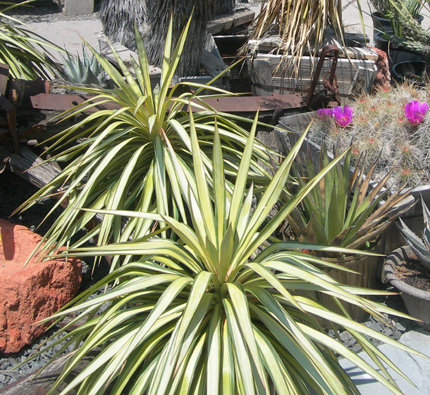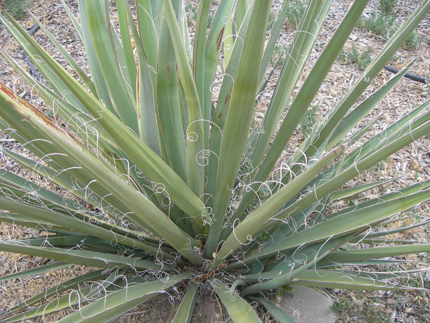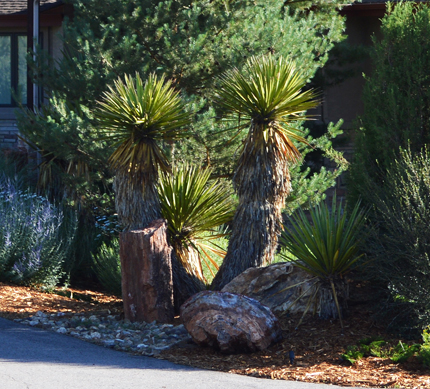5 Yuccas to use in Your Landscape – These Yuccas aren’t Yucky
When discussing Yucca plants with other people, I’m usually presented with two responses: the majority who detest them, and the few people who love them. If you are of the former, I hope I can convince you to move towards the latter group. Or at least I hope to persuade you to begin to reconsider the so-called “yucky Yuccas.”
There is one type of Yucca in particular that turned me into a Yucca fan. This would be Yucca filamentosa. This Yucca has all the things that make many Yuccas great for Colorado gardens: low water requirement, dramatic flowers that are pollinated at night by moths, and evergreen winter interest.

What Y. filamentosa has that other yuccas that can grow in our hardiness zone don’t have is softer leaves that can fold over towards the end, despite having sharp tips. This makes it a possibly better choice for gardeners who might be concerned about the stiff, sword like nature of some yuccas such as Y. glauca (which still make great landscape plants!). In addition these Yuccas can take some filtered shade, whereas most Yuccas prefer only full sun. Keep in mind that Yuccas, like many low-water garden plants prefer good drainage to avoid root rot. In addition to Adam’s Needle, there are a few other varieties of Y. filamentosa that offer variegated leaf color, such as Bright Edge Yucca and Color Guard Yucca.
Similar to Y. filamentosa is Y. flaccida. Y. flaccida hails from the Appalachian Mountains. Just like Y. filamentosa, Y. flaccida is more accustomed to your average garden soils and watering regimen. If you want to add a Yucca to an area that already contains other perennials that are not extremely xeric, you should consider Y. filamentosa and Y. flaccida. But while these two species can desire more water than the other yucca species, they are still low water plants that need well-drained soil to keep them happy.
If it is architectural drama you seek for your garden, consider planting Yucca thompsoniana. Thompson’s Yucca is native to New Mexico, Texas, and northern Mexico. Under the right conditions, it may reach up to 10 feet tall. Thompson’s Yucca stems can even sometimes branch off, giving a similar look to the famous Joshua Tree Yuccas (Yucca brevifolia). Flowers are borne on 3 to 5 foot spikes, further increasing the drama of these beauties. For inspiration I recommend you visit the Thompson Yuccas at the Denver Botanic Gardens.

Another captivating form of Yucca is Y. baccata, commonly called Banana Yucca. It was a source of food for Native Americans of the Southwest. The long, stiff bluish-green leaves often curl back toward the base, and sport course curled fibers along the edges. Those curled fibers look striking in afternoon backlight. Banana Yucca can reach a height of 4 feet and width of 5 feet, so give it a good, dry space to thrive.
For native plant purists on Colorado’s Front Range, the Soapweed Yucca (Y. glauca) is a good choice. It is distributed widely across the high plains and foothills of Colorado, and is found from Canada to Texas. It is the most cold-hardy Yucca species available. As I mentioned previously, this Yucca has stiff leaves with sharp tips. Y. glauca grows 2-4’ tall and 2-4’ wide, and requires very little water.

Yucca faxoniana
If you have been avoiding the so-called Yucky Yuccas, please reconsider your position and give one of these xeriscape essentials a spot in your low-water landscape.
This is the official blog of Outdoor Design Group, Colorado Landscape Architects. For more information about our business and our services, click here.